
Mission Operations Room
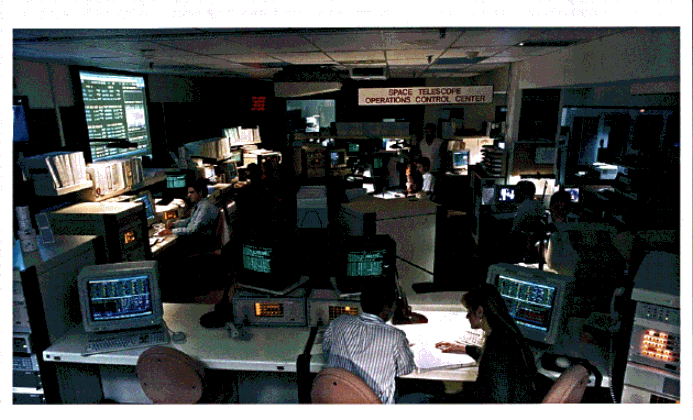
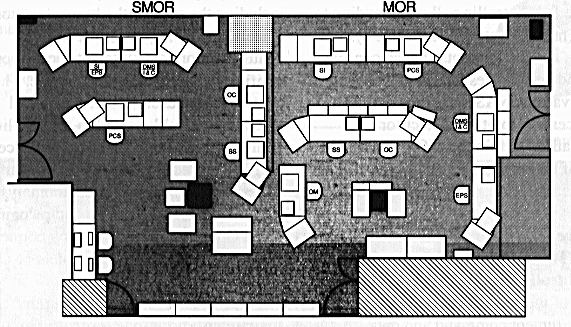
This diagram shows the layout of the Servicing Mission Operations Room,
left, and the Mission Operations Room with a staffing outline.
Mission Operations Room
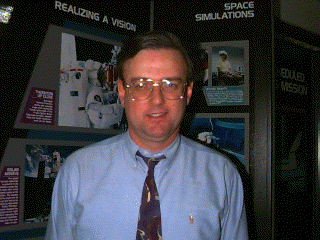
|
Space telescope operations -- including health and
safety of the spacecraft, efficient operation and flight system
engineering of the obserservatory -- are the responsibility of NASA
contractors under the Mission Operations, System Engineering and Software
(MOSES) contract.
Pictured is Preston Burch |
| The Operations Manager
(OM) is NASA's space telescope project operational representative.
The OM manages and provides technical direction to the Flight Operations
Team during normal HST operations activities, engineering tests and
simulations. This functional position assures project representation
around the clock to meet day-to-day mission objectives. The OM, while on
duty, is responsible for the overall operations and health and safety of
the observatory in orbit.
Pictured is Chris Wilkinson |
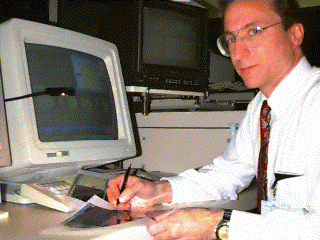
|
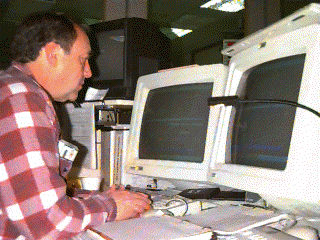
|
The Shift Supervisor (SS)is the lead member of each Flight
Operations (FO) team. Pictured is Dick Turcotte |
The SS oversees the activities of all mission
operations personnel on shift and has overall responsibility for assuring
the real-time health and safety of the space telescope. The SS is
responsible for controlling the execution of all real-time commanding to
the vehicle and, from the master console in the MOR, must issue a
software "allow" to authorize any commanding during critical opertions.
The SS coordinates the interface configurations with the many elements
required to support mission operations and ensures that personnel adhere
to respondible operations conduct.
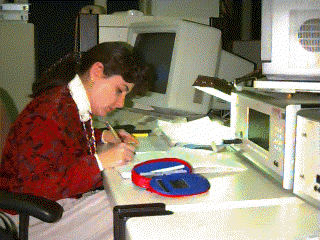
| The Science Instrument/Command and Data
Handling/Thermal Control
Subsystem/Pointing Control System Flight Controller is
responsible for the Health and safety of the science instruments and the
science instrument command and data handling subsystem.
Pictured is Theresa Richter
|
This flight controller
also monitors the status of the onboard NSSC-1 computer, which controls
the payload, and its interface with the onboard DF-224 engineering
computer and the science instruments. The thermal state of the spacecraft
also is monitored by this flight controller. This flight controller also
is responsible for the health and safety of the pointing control
subsystem and for verifying its nominal performance, including the state
of the gyros, reaction wheels, and safing system.
| The flight controller
monitors all target acquisitions and verifies that the spacecraft is
stable. This controller also ensures that the optical telescope assembly
is within thermal limits and monitors the status of the fine guidance
sensors. The controller advises the Shift Supervisor in the event of
ananomaly involving these subsystems and recommends any commanding
necessary to safeguard the vehicle or
payload
Notice the HST schedule on the desk. The
schedule during our March 14th broacast may be
seen by clicking here
| 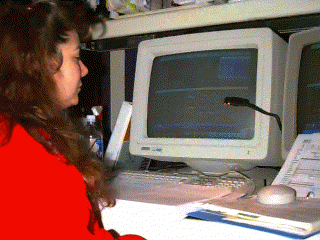
|
| Data Management
Subsystem/Instrumentation and Control/Structures and Mechanisms Flight
Controller monitors the performance of the
onboard DF-224 engineering computer and performs onboard tape recorder
management.
Pictured is Ed Olson
| 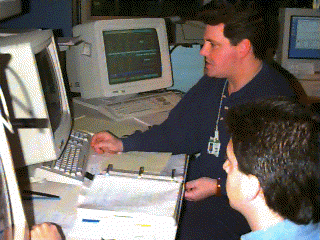 |
The Data Management Subsystem/Instrumentation and
Control/Structures
and Mechanisms Flight Controller monitors the performance of the
onboard DF-224 engineering computer and performs onboard tape recorder
management. This flight controller also is responsible for the flow of
commands to, and data from, the space telescope and determines the proper
data mode, telemetry rate, format, and receiver and transmitter
configurations to support this function. This flight controller monitors
the mode and quality of the forward and return links between the HST and
the Space Network or the Ground Network and verifies the correct pointing
of the high-gain antennae.
The Flight Controller verifies the performance of the space
telescope's batteries during their use in Earth shadow and recharging in
sunlight, and ensures that the solar arrays are positioned correctly to
maximize power to the spacecraft. In the event of an anomaly involving
any of these subsystems, the controller advises the Shift Supervisor and
recommends any commanding necessary to safeguard the vehicle or payload.













![]()